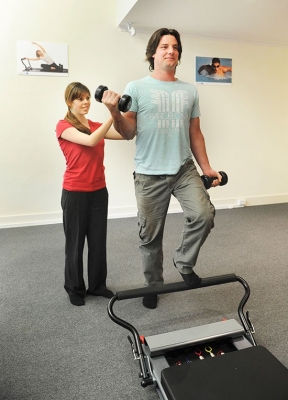Physical activity plays an important role in disease prevention and management. Leading an active lifestyle helps maintain good function as we age, and reduces the risk of injury and illness related to deconditioning. However, occupations which have a large physical component can also expose individuals to an increased risk of injury. We will explore some of the mechanisms and how the risks can be minimised. While the back is one area which is typically aggravated from poor workplace practices, the below information also applies to other areas of the body as well.
Heavy loads + high risk activities
Some occupations involve heavy lifting and this can lead to injury if proper care isn’t taken. Every workplace should have clear guidelines based on occupational health and safety standards. Education should be provided to all employees on how to complete their job effectively, while adhering to these guidelines. This means understanding what the weight limits are for lifting objects (this is usually defined as an amount in kilograms). However, the shape of the object(s) being manually lifted can also affect the difficulty of the task. Some objects which are awkwardly shaped may require a variable technique, or assistance from a colleague. If necessary, certain equipment may need to be utilised or several workers may need to assist in the task. For your safety, as well as the productiveness of the workplace, it is always better to make sure the task is completed correctly, rather than rushing it and sustaining an injury.
Repetitive strain
Some tasks are not necessarily ‘heavy’ but can cause strain and injury due to their repetitive nature. Do you remember how sore your hand would get during exams at school, when writing essays continuously for an hour or longer? Writing is not a strenuous task, but doing it for a prolonged period can certainly cause pain and injury.
As described above, workplaces should have guidelines in place for reducing the risk of injury in occupations that have very repetitive tasks. If you have not been taught how to best avoid incurring a repetitive strain injury, here are some helpful tips.
- Take regular breaks: even if it’s just a minute or two every half hour. Use the time to go to the bathroom, have a little walk and even do a few stretches.
- Have a good stretching routine: any movement will be good, but if you need a specific regime, have a chat with your physiotherapist who can advise what will be best for your specific job.
- Keep a water bottle handy: this one will have two benefits. First, it will ensure you remain hydrated. Secondly, it will require you to use the bathroom more frequently, thereby forcing you to take a break from the task you are performing.
- Set a timer: if you don’t trust yourself to manage your time well, don’t leave it to chance. Set a 30 minute alarm and use this time to practice some of the abovementioned tips.

